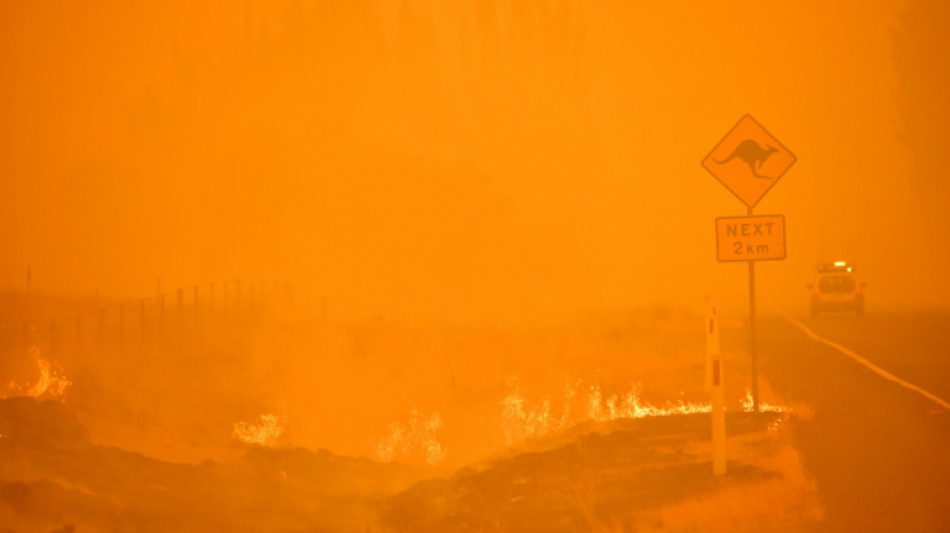
-
 India bowl out South Africa for 270 after De Kock ton
India bowl out South Africa for 270 after De Kock ton
-
England staring down the barrel under Gabba lights as Australia dominate

-
 Egyptian actor faces challenge in iconic role of singer Umm Kulthum
Egyptian actor faces challenge in iconic role of singer Umm Kulthum
-
Chock and Bates win Grand Prix Final ice dance

-
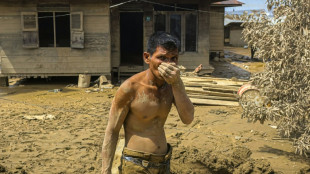 Starvation fears as flood toll passes 900 in Indonesia
Starvation fears as flood toll passes 900 in Indonesia
-
Four civilians, soldier killed in Afghan-Pakistan border clash
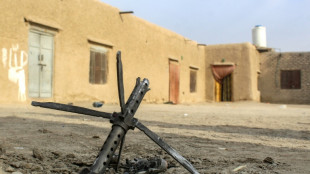
-
 Milan-Cortina chief admits venue time pinch as Olympic torch relay begins
Milan-Cortina chief admits venue time pinch as Olympic torch relay begins
-
England make quick start after Australia take big lead at Gabba

-
 Finally! India break toss jinx as Rahul gets lucky
Finally! India break toss jinx as Rahul gets lucky
-
Will EU give ground on 2035 combustion-engine ban?

-
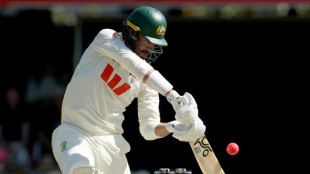 England nemesis Starc stretches Australia lead in Gabba Ashes Test
England nemesis Starc stretches Australia lead in Gabba Ashes Test
-
Banana skin 'double whammy' derails McIlroy at Australian Open

-
 Epic Greaves double ton earns West Indies draw in first NZ Test
Epic Greaves double ton earns West Indies draw in first NZ Test
-
Thunder roll to 14th straight NBA win, Celtics beat depleted Lakers

-
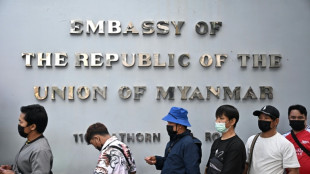 Myanmar citizens head to early polls in Bangkok
Myanmar citizens head to early polls in Bangkok
-
Starvation fears as more heavy rain threaten flood-ruined Indonesia
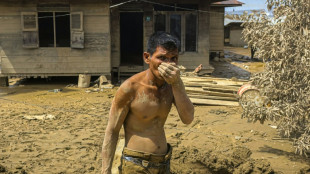
-
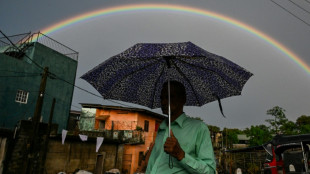 Sri Lanka unveils cyclone aid plan as rains persist
Sri Lanka unveils cyclone aid plan as rains persist
-
Avatar 3 aims to become end-of-year blockbuster

-
 Contenders plot path to 2026 World Cup glory after Trump steals show at draw
Contenders plot path to 2026 World Cup glory after Trump steals show at draw
-
Greaves leads dramatic West Indies run chase in NZ Test nail-biter

-
 World record-holders Walsh, Smith grab wins at US Open
World record-holders Walsh, Smith grab wins at US Open
-
Ukraine, US to meet for third day, agree 'real progress' depends on Russia
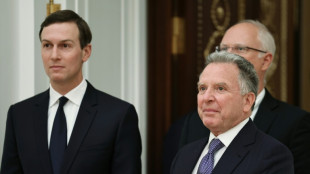
-
 Double wicket strike as New Zealand eye victory over West Indies
Double wicket strike as New Zealand eye victory over West Indies
-
Peace medal and YMCA: Trump steals the show at World Cup draw

-
 NBA legend Jordan in court as NASCAR anti-trust case begins
NBA legend Jordan in court as NASCAR anti-trust case begins
-
How coaches reacted to 2026 World Cup draw

-
 Glasgow down Sale as Stomers win at Bayonne in Champions Cup
Glasgow down Sale as Stomers win at Bayonne in Champions Cup
-
Trump takes aim at Europe in new security strategy

-
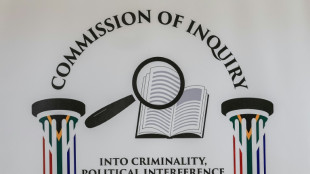 Witness in South Africa justice-system crimes probe shot dead
Witness in South Africa justice-system crimes probe shot dead
-
Tuchel urges England not to get carried away plotting route to World Cup glory

-
 Russian ambassador slams EU frozen assets plan for Ukraine
Russian ambassador slams EU frozen assets plan for Ukraine
-
2026 World Cup draw is kind to favorites as Trump takes limelight

-
 WHO chief upbeat on missing piece of pandemic treaty
WHO chief upbeat on missing piece of pandemic treaty
-
US vaccine panel upends hepatitis B advice in latest Trump-era shift

-
 Ancelotti says Brazil have 'difficult' World Cup group with Morocco
Ancelotti says Brazil have 'difficult' World Cup group with Morocco
-
Kriecmayr wins weather-disrupted Beaver Creek super-G

-
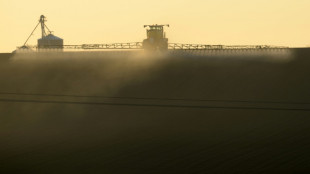 Ghostwriters, polo shirts, and the fall of a landmark pesticide study
Ghostwriters, polo shirts, and the fall of a landmark pesticide study
-
Mixed day for global stocks as market digest huge Netflix deal
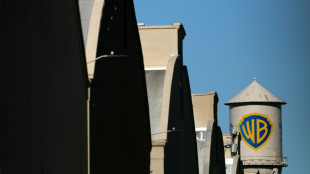
-
 Fighting erupts in DR Congo a day after peace deal signed
Fighting erupts in DR Congo a day after peace deal signed
-
England boss Tuchel wary of 'surprise' in World Cup draw

-
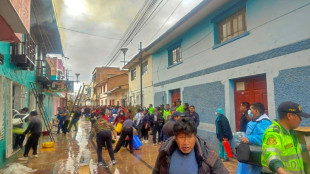 10 university students die in Peru restaurant fire
10 university students die in Peru restaurant fire
-
'Sinners' tops Critics Choice nominations

-
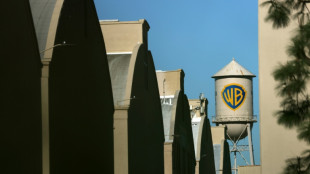 Netflix's Warner Bros. acquisition sparks backlash
Netflix's Warner Bros. acquisition sparks backlash
-
France probes mystery drone flight over nuclear sub base

-
 Frank Gehry: five key works
Frank Gehry: five key works
-
US Supreme Court to weigh Trump bid to end birthright citizenship

-
 Frank Gehry, master architect with a flair for drama, dead at 96
Frank Gehry, master architect with a flair for drama, dead at 96
-
'It doesn't make sense': Trump wants to rename American football

-
 A day after peace accord signed, shelling forces DRC locals to flee
A day after peace accord signed, shelling forces DRC locals to flee
-
Draw for 2026 World Cup kind to favorites as Trump takes center stage

| RBGPF | 0% | 78.35 | $ | |
| BCE | 1.4% | 23.55 | $ | |
| CMSD | -0.3% | 23.25 | $ | |
| BCC | -1.66% | 73.05 | $ | |
| NGG | -0.66% | 75.41 | $ | |
| SCS | -0.56% | 16.14 | $ | |
| CMSC | -0.21% | 23.43 | $ | |
| RELX | -0.55% | 40.32 | $ | |
| VOD | -1.31% | 12.47 | $ | |
| RIO | -0.92% | 73.06 | $ | |
| RYCEF | -0.34% | 14.62 | $ | |
| GSK | -0.33% | 48.41 | $ | |
| BP | -3.91% | 35.83 | $ | |
| AZN | 0.17% | 90.18 | $ | |
| BTI | -1.81% | 57.01 | $ | |
| JRI | 0.29% | 13.79 | $ |

Australia's 'Black Summer' fires affected ozone layer: study
Australia's catastrophic "Black Summer" bushfires significantly affected the hole in the Earth's ozone layer, according to a new report published Friday.
The report, which appeared in the Nature journal "Scientific Reports", traced a link from the unprecedented smoke released by the fires to the ozone hole above Antarctica.
The fires, which burned through 5.8 million hectares of Australia's east in late 2019 and early 2020, were so intense they caused dozens of smoke-infused pyrocumulonimbus clouds to form.
Pyrocumulonimbus clouds, referred to as the "fire-breathing dragon of clouds" by NASA, are so powerful they can affect the local weather, causing fire tornadoes and lightning storms.
During the "Black Summer", these clouds shot more smoke high into the atmosphere than the previous record, set by the 2017 North American wildfires.
Around New Year 2019, uncontrolled fires along Australia's east coast caused a pyrocumulonimbus event that stretched on for days.
The result was "millions of tonnes of smoke and associated gases being injected into the upper troposphere and lower stratosphere", according to researchers from the University of Exeter and the University of Manchester.
A build-up of smoke particles, in turn, caused the lower stratosphere to warm to levels not seen since the eruption of Mount Pinatubo in 1991, they found.
Because of this stratospheric warming, the fires also prolonged the Antarctic ozone hole, which appears above Antarctica each spring and "reached record levels in observations in 2020".
- Ozone gains threatened -
The hole was first created by human pollution -- particularly the chlorofluorocarbons (CFCs) that were once emitted from many refrigerators -- but in recent decades, global cooperation has given the ozone layer a chance to repair.
The Montreal Protocol, signed in 1987 and since ratified by 195 countries, sharply reduced the amount of CFCs in the atmosphere, and the ozone layer was expected to fully recover by 2060, according to United Nations modelling.
However, the researchers warn that because climate change will increase the frequency and intensity of bushfires, similar events -- in which pyrocumulonimbus clouds shoot smoke high into the stratosphere –- will become more likely.
Professor James Haywood told AFP that climate change could "absolutely" stymie the gains made by the Montreal Protocol.
"Our climate models suggest an increase in frequency and intensity of wildfires in the future under global warming. This may lead to more events like that in 2020, which could in turn lead to more ozone depletion," he said.
"So the considerable efforts that we've put in protecting the ozone hole could be thwarted by global warming."
F.Pavlenko--BTB




